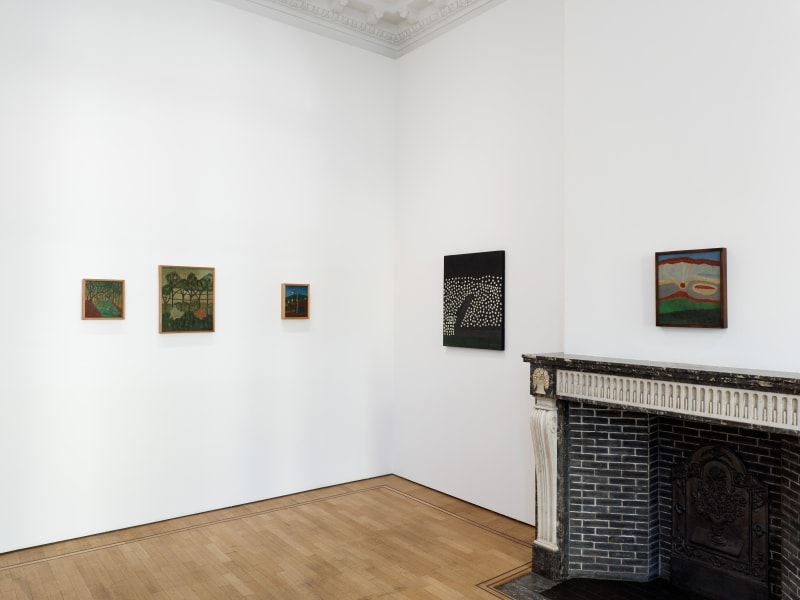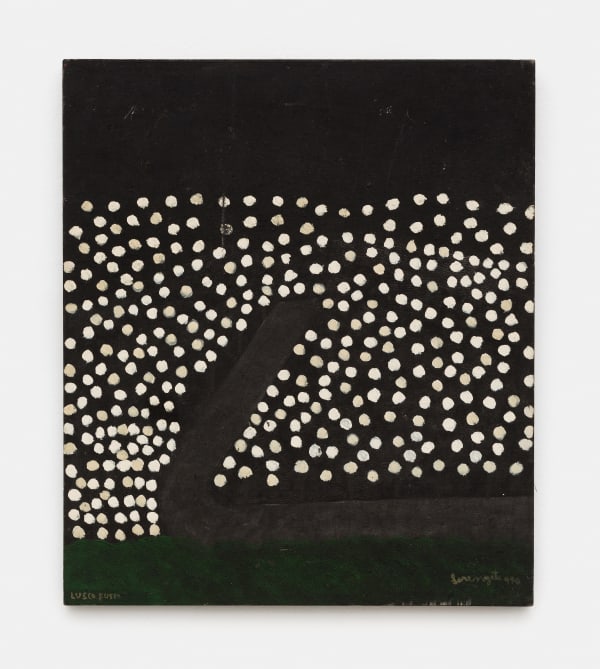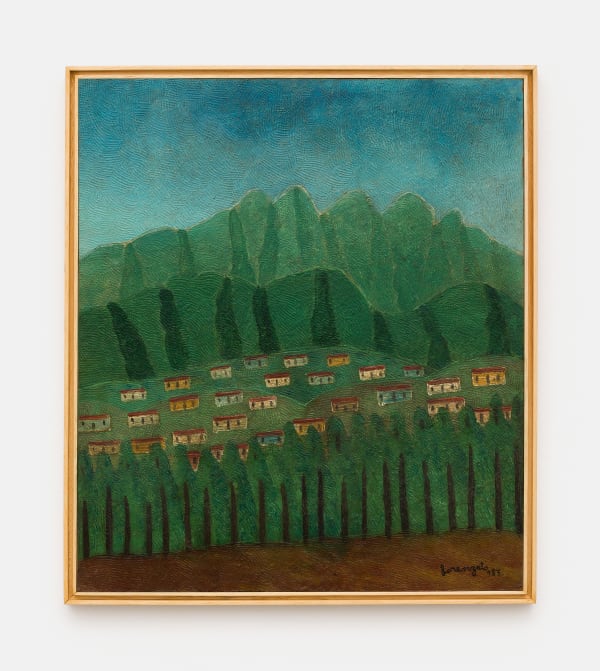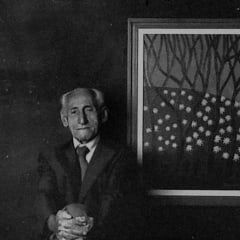Amadeo Luciano Lorenzato
Amadeo Luciano Lorenzato, selected by Giangiacomo Rossetti
Amadeo Luciano Lorenzato, autodidact painter and straight shooter. He does not have schooling. He does not follow tendencies. He does not belong to churches. He paints as it comes. Amen – Amadeo Luciano Lorenzato, 1946
Mendes Wood DM Brussels is pleased to present an exhibition of paintings by the seminal Brazilian artist Amadeo Luciano Lorenzato (1900-1995). Comprised of works made between the 1960s and the 1990s, which have been selected by Italian painter Giangiacomo Rossetti (b.1989, Milan), this show marks Lorenzato’s first solo presentation in Belgium. Drawn to the natural world and the imponderabilia of daily life, Lorenzato depicted landscapes, still lives and scenes from his hometown of Belo Horizonte, Brazil. His aim was not to replicate his environment, but rather to translate it through a simplified vision of reduced geometric forms utilizing rich, handmade pigments and defined brush strokes.
Born in 1900 in Belo Horizonte to Italian immigrants, Lorenzato began working as a painter’s assistant in 1910. Due to the outbreak of Spanish Influenza that hit Brazil in the late 1920s, Lorenzato and his family returned to Italy, where the young émigré became a wall painter in the reconstruction of the town of Asiero, which had been destroyed during the First World War.
In 1925, he enrolled in his first and only formal art course at the Reale Accademia delle Arti in Vicenza, where he began painting with an easel. After finishing his studies, Lorenzato left for Rome, where he met Dutch painter Cornelius Keesman. With his newfound friend, he embarked on a year-long cycling trip across Europe, visiting various countries including France, Austria, Bulgaria and Turkey. It was during his travels that he immersed himself in the making of work, painting small gouaches that he would sell in order to sustain himself. This trip was of particular significance for Lorenzato, not only in that it enabled him to absorb European culture and architecture, but also provided him with the opportunity to explore museums, encountering works by artists such as Matisse, Picasso and Gauguin.
Following the trip, Lorenzato moved back to Italy for a short time before returning to his native Belo Horizonte in 1948, where he worked in the construction trade. Eight years later, he sustained a severe leg injury which, consequently at the age of 56, allowed him to retire and dedicate himself exclusively to painting, until his death in 1995.
Through his work in civil construction, Lorenzato gained an intimate understanding of materials and often made his own canvases utilizing wire, cement plates or cardboard. He also implemented techniques and tools from his time as a mural painter, using combs, brushes and forks which he referred to as pincel-pente, or comb-brushes. These crude but expressive tools allowed him to achieve the deeply grooved and less incisive brushwork of his frenzied surfaces.
Although Lorenzato worked in isolation for most of his life, he painted in the Minas Gerais tradition as established by the celebrated mid 20th century Brazilian artist Alberto da Veiga Guignard. Like Lorenzato, Guignard’s preferred theme of choice was the landscape, hazy and suspended in gravity, while Lorenzato’s world rested between elasticity and constructivism.
Largely a self-taught artist, Lorenzato considered painting an everyday activity, a natural extension of himself and “a form of spiritual survival.” A vital part of his creative process was going on long walks around his home and in the countryside, making drawings and sketches that he would later translate to paintings from memory. He filtered, abstracted, and transferred these memories to canvas, organically mixing pictorial and thematic elements into his works.
Lorenzato’s paintings do not attempt to translate the real – clouds are not merely clouds, and shadows are not merely shadows. Rather, they are nuanced possibilities of appearances, and inhabit an illusionary world. Through his painting, Lorenzato developed a pure and powerful private language that offered an alternative view of the reality that surrounded him.
– Thomas Rackowe Cork
-
 Amadeo Luciano Lorenzato, Untitled, 1987
Amadeo Luciano Lorenzato, Untitled, 1987 -
 Amadeo Luciano Lorenzato, Untitled, 1977
Amadeo Luciano Lorenzato, Untitled, 1977 -
 Amadeo Luciano Lorenzato, Untitled, 1975
Amadeo Luciano Lorenzato, Untitled, 1975 -
 Amadeo Luciano Lorenzato, Lusco Fusco, 1990
Amadeo Luciano Lorenzato, Lusco Fusco, 1990 -
 Amadeo Luciano Lorenzato, Untitled, 1985
Amadeo Luciano Lorenzato, Untitled, 1985 -
 Amadeo Luciano Lorenzato, Untitled, 1988
Amadeo Luciano Lorenzato, Untitled, 1988 -
 Amadeo Luciano Lorenzato, Untitled, 1991
Amadeo Luciano Lorenzato, Untitled, 1991 -
 Amadeo Luciano Lorenzato, Untitled, 1995
Amadeo Luciano Lorenzato, Untitled, 1995 -
 Amadeo Luciano Lorenzato, Untitled, n.d.
Amadeo Luciano Lorenzato, Untitled, n.d. -
 Amadeo Luciano Lorenzato, Untitled, 1969
Amadeo Luciano Lorenzato, Untitled, 1969 -
 Amadeo Luciano Lorenzato, Untitled, 1993
Amadeo Luciano Lorenzato, Untitled, 1993 -
 Amadeo Luciano Lorenzato, Sol atrás do Bosque, 1982
Amadeo Luciano Lorenzato, Sol atrás do Bosque, 1982 -
 Amadeo Luciano Lorenzato, Flora e Fauna Tropical, 1977
Amadeo Luciano Lorenzato, Flora e Fauna Tropical, 1977 -
 Amadeo Luciano Lorenzato, Casas da colina, 1983
Amadeo Luciano Lorenzato, Casas da colina, 1983 -
 Amadeo Luciano Lorenzato, Untitled / Sem título, 1988
Amadeo Luciano Lorenzato, Untitled / Sem título, 1988

















